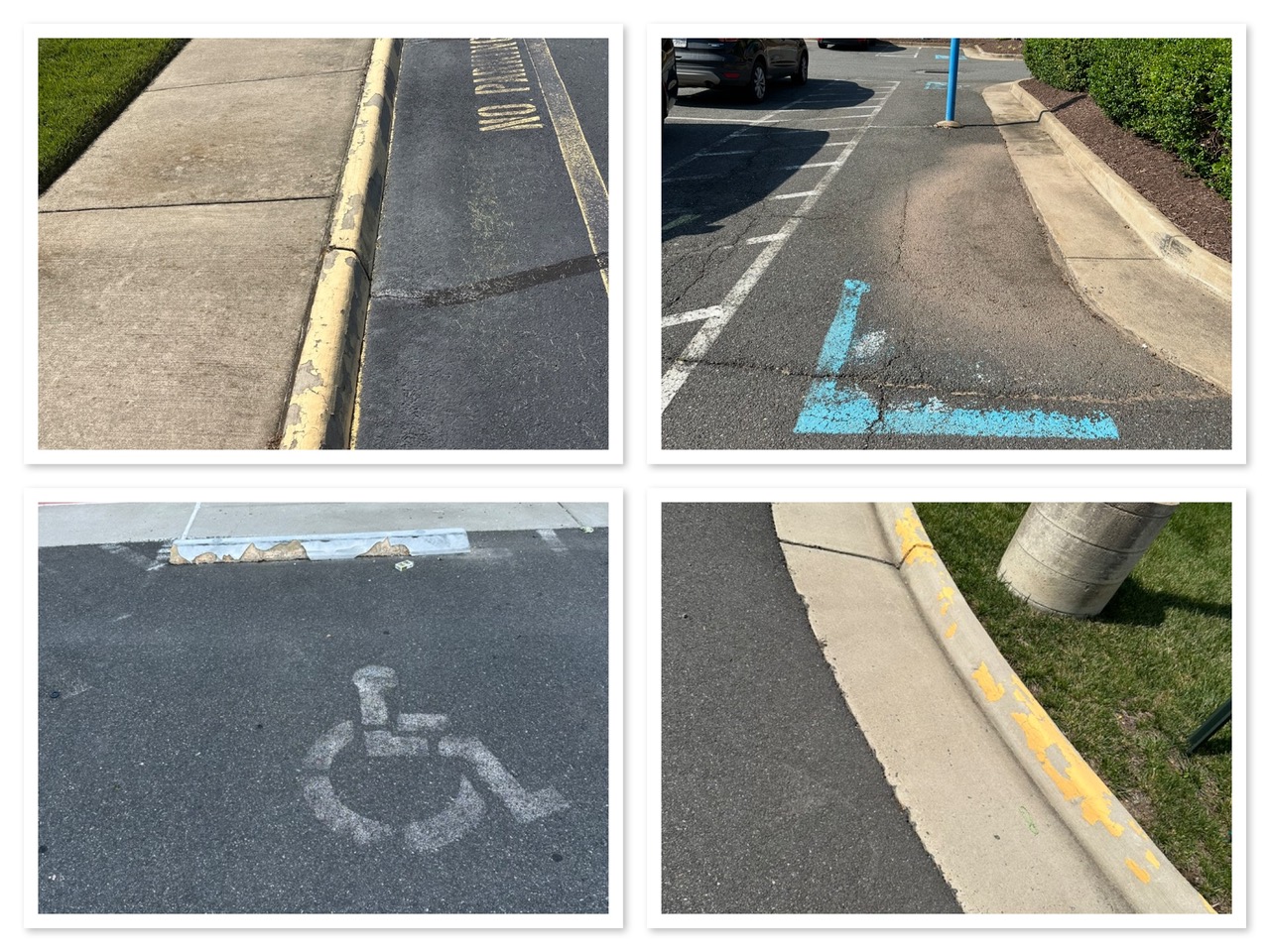When it comes to maintaining a commercial property, the parking lot is often overlooked in favor of more critical or complex systems, such as the roof, HVAC, or electrical systems. However, for office complexes and retail spaces, the parking lot is the first impression your tenants, customers, and clients see, and it carries real financial and safety risks if not properly maintained.
At Bright Leaf Commercial Property Inspections, we follow the CCPIA Commercial Standards of Practice (ComSOP) when evaluating parking lots as part of our exterior inspection. Here’s why these inspections matter, what we look for, and the risks of neglect.
First Impressions and Functionality
Whether it’s a strip mall or a professional office park, a clean, well-maintained parking lot signals professionalism and safety. Damaged pavement, poor lighting, or confusing markings, on the other hand, can cause frustration and possible damage or injury.
Parking lots are more than just places to park. They are traffic systems, drainage systems, and liability zones. Like any other component of a commercial property, they wear over time due to traffic loads, weather, and age. Regular inspections help property owners address issues before they become expensive problems or legal liabilities.
Safety and Accessibility Regulations
In addition to preserving the surface and structure of a parking lot, regular inspections play a critical role in ensuring compliance with accessibility and safety regulations. Federal and local laws, including the Americans with Disabilities Act (ADA), require property owners to provide clearly marked and properly dimensioned accessible parking spaces. These spaces must be maintained in good condition, with visible striping, appropriate signage, and accessible routes to building entrances. Faded markings or improperly sized spaces can lead to costly fines and legal liability. Poor condition also makes your property less welcoming or functional for customers, tenants, or employees with disabilities.
Similarly, clearly marked fire lanes are essential for emergency access. Fire codes require that these lanes remain unobstructed and properly labeled to allow fire and rescue vehicles to access the property quickly in the event of an emergency. Regular inspections help identify issues such as worn paint, improper signage, or unauthorized parking in these zones. Staying proactive with parking lot maintenance isn’t just about aesthetics. It’s also about ensuring your property meets legal standards, protects public safety, and avoids unnecessary risk.
What’s Included in a Parking Lot Inspection
Our inspections follow the CCPIA Commercial Property Inspection Standards of Practice, which outlines a thorough visual inspection process. When inspecting a parking lot, we look at the following important factors.
1. Pavement Surface Condition
- We look for cracking, potholes, raveling, and surface depressions.
- Alligator cracking, for instance, can indicate subbase failure, not just surface wear.
2. Drainage and Water Flow
- Inspecting grade slope, catch basins, and visible drainage paths ensures water doesn’t pool or undermine the lot’s foundation.
- Poor drainage can erode sublayers or cause ice buildup in colder months.
3. Striping and Markings
- We assess visibility and compliance with ADA parking requirements.
- Faded lines not only reduce efficiency but may also put the property at risk of noncompliance fines.
4. Curbs and Wheel Stops
- We examine for cracks, displacement, or missing stops that can result in vehicle or pedestrian accidents.
5. Lighting and Visibility
- Adequate lighting is essential for both safety and security.
- Burnt-out or insufficient fixtures can create hazards and increase liability risks.
- We’ll often re-inspect after dusk to check that all lighting is operational.
6. Signage and Traffic Flow
- We evaluate whether signage is clear, visible, and appropriate for directing both vehicles and pedestrians.
Risks of Skipping Regular Parking Lot Inspections
Neglecting parking lot inspections may seem harmless in the short term, but it can quickly lead to:
🚧 Safety Hazards
- Trip-and-fall claims from uneven pavement or broken curbs
- Vehicle damage from potholes or misplaced wheel stops
⚖️ Legal & ADA Noncompliance
- Fines or lawsuits due to improper signage or inadequate ADA access
💸 Deferred Maintenance Costs
- Small cracks can become full-depth replacements if left untreated
- Poor drainage may result in erosion or flooding issues in adjacent buildings
📉 Tenant Dissatisfaction
- Tenants in office complexes or retail strips expect a safe, professional environment for their customers.
- Poor conditions can contribute to tenant turnover and lower occupancy rates.
How Often Should You Inspect?
We recommend a seasonal visual inspection and a detailed evaluation annually. This is especially important in climates like Northern Virginia, where freeze-thaw cycles accelerate pavement damage. For parking lots with speed bump or humps, it’s critical to inspect after plowing to ensure the bumps were not damaged.
At Bright Leaf, our annual Preventative Maintenance Inspections include the parking lot as a standard component. For clients who own or manage retail or office properties, this provides peace of mind and actionable insights for budgeting and repairs.
A Smart Investment
Inspecting your parking lot is about more than compliance or curb appeal—it’s about protecting your investment, reducing liability, and keeping tenants happy.
If you own or manage a small office complex or retail center in Northern Virginia, we’d be glad to help. Our detailed inspection reports help you prioritize repairs, plan capital improvements, and document your diligence.
Contact Bright Leaf Commercial Property Inspections today to schedule your next inspection or learn more about our preventative maintenance programs.


